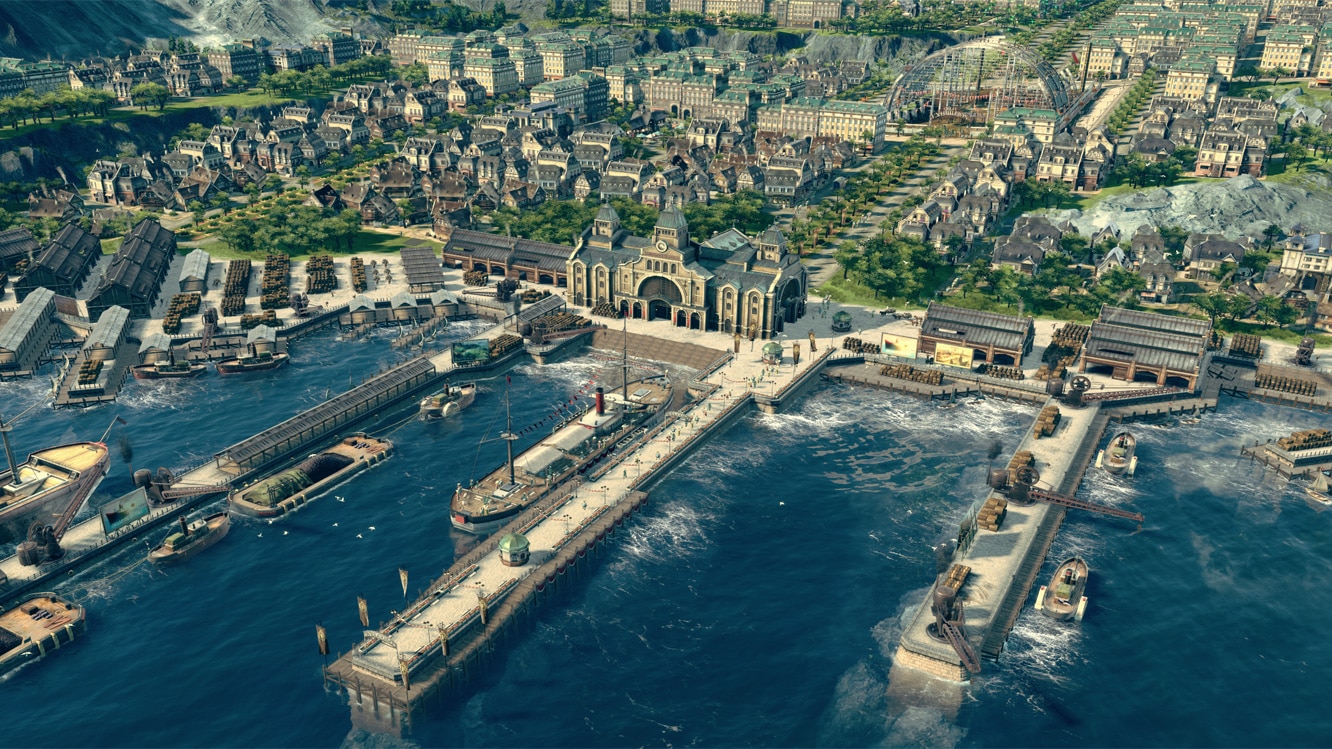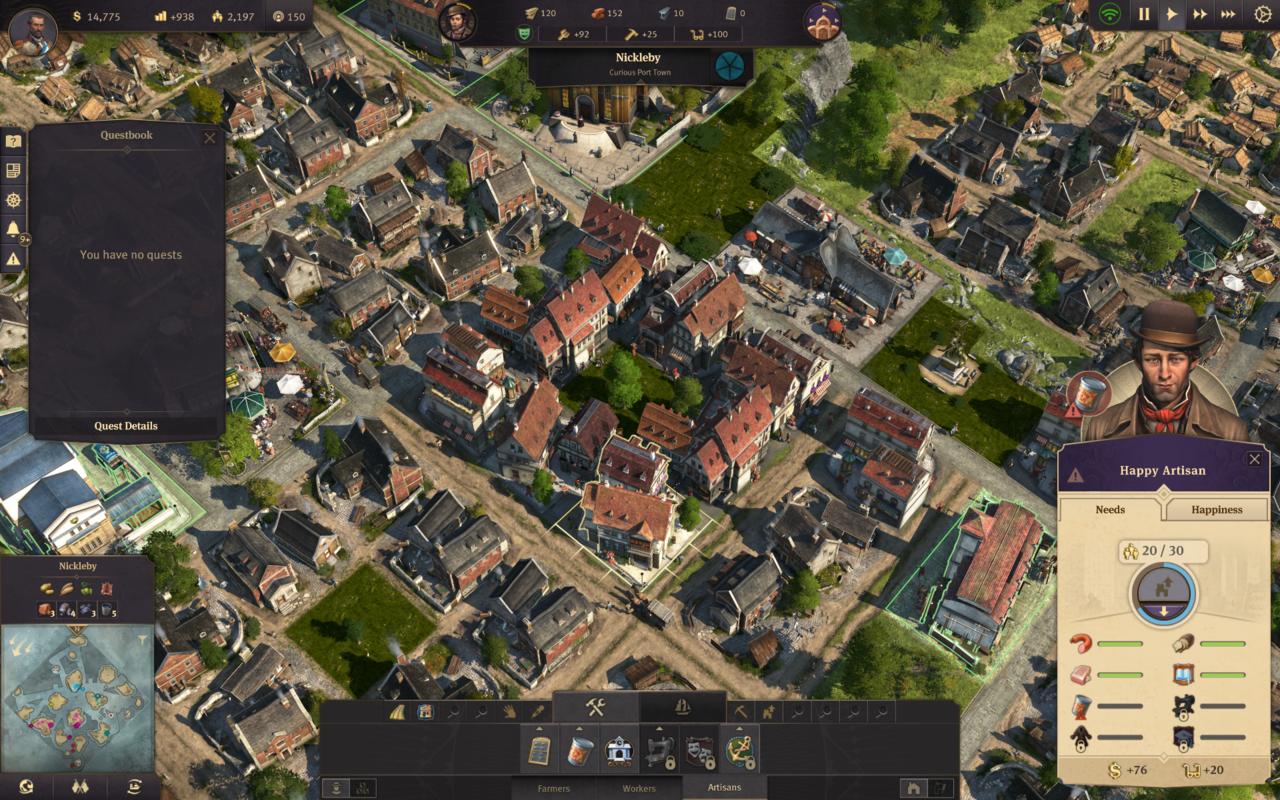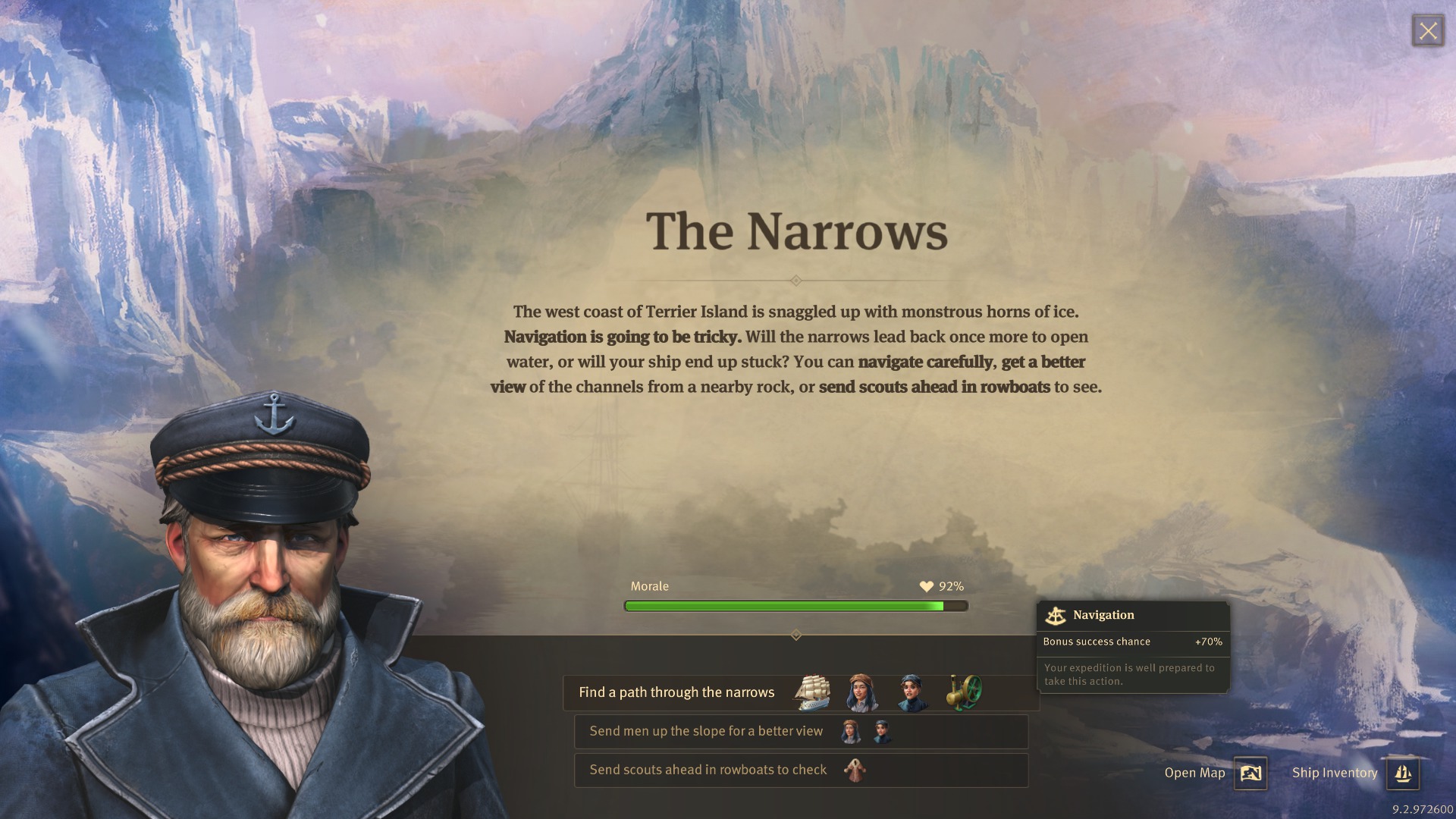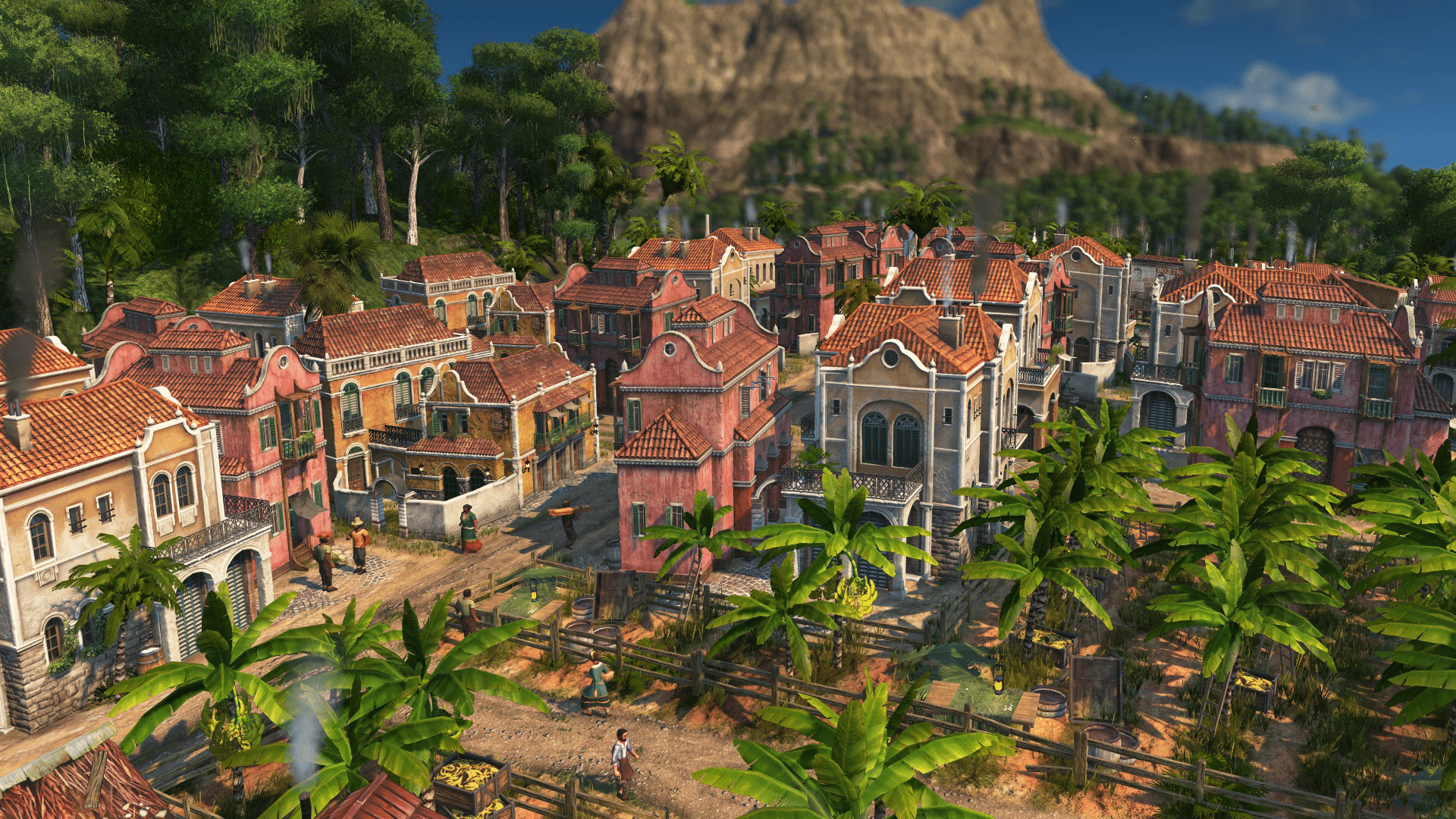Anno 1800 is a real-time city building strategy game developed by Blue Byte and published by Ubisoft, released on April 16, 2019. It is the seventh game in the Anno series, taking place during the Industrial Revolution in the 19th century.

Website link: https://www.ubisoft.com/en-gb/game/anno/1800
Lens 2: The Lens of Essential Experience
The essential experience of Anno 1800 is to build sprawling, beautiful and powerful cities. Players settle islands in the game and build production chains to produce goods for their population. Progress is made by advancing citizens to higher social classes by meeting their needs, from Farmers to Workers, Artisans, Engineers and finally Investors. As the player’s population grows larger and more advanced, the player will unlock new and more advanced production chains and buildings.

This sense of progression is what drives the main gameplay of Anno 1800, and players are rewarded as they progress through the different social classes. For example, upon reaching Engineers, new buildings are unlocked such as the Steam Shipyard which can build powerful new steamships, or the Oil Power Plant which provides electricity to boost productivity. Upon reaching Investors, the player unlocks the ability to build a monument known as the World’s Fair, an incredible building that is not only glamorous, but hugely beneficial to the player by giving powerful and game-changing buffs. All of these mechanics serve well to fulfill the greater purpose of allowing the player to build and sustain larger and more productive cities. It really gave me a great impetus to keep working towards progressing to the next tier to keep growing my city larger.

Lens 9: The Lens of the Elemental Tetrad
Mechanics:
The Anno series has always had a unique mechanic where citizens of a social class must have all their needs fulfilled completely before advancing to the next social class. Each need would usually require a different production chain, often with new resources. Players will usually be implored to search for new resources elsewhere on other islands, settling on them and linking trade routes. If there are NPCs or pirates in their game, the player would also have to contend with potential aggressors. These other mechanics all build upon this central mechanic, which results in a very cohesive experience. It also provides a clear direction for the player to head towards.

Story:
The game features both a sandbox mode with no story and also a story campaign. Both however share a common theme of the influences of industrialisation, of how it not only leads us to progress and wealth, but also leads us to pollution and war. There are also self-contained stories in the form of expeditions, where the player sends a ship in search of new lands or rare items to collect. Each expedition plays out like a typical tabletop RPG, with random events where the player is given choices on how to proceed.

Aesthetics:
The buildings, ships and environments are all designed in painstaking detail and with great fidelity. Factories show animations of goods being loaded or unloaded, citizens roam the streets in horse-drawn carriages or Penny Farthings. All these tiny details give a level of authenticity to the world and really immerses the player in the 19th century time period. I definitely feel that Anno 1800’s strongest aspect was its graphics.

Technology:
Anno 1800 was created with the “Anno Engine” with its own terrain system that allowed for massive mountains systems and more detailed environments. Besides graphical capabilities, the Anno Engine also allows for seamless, almost-instantaneous transition between different regions in the game’s world map, which happens very often during play. Even with the addition of more regions in subsequent DLCs, the transition between them is still equally quick.

Lens 7: The Lens of Endogenous Value
In Anno 1800, there is a mechanic known as attractiveness. Attractiveness is a measure of how attractive your city is, and buildings such as the Zoo and the Museum can raise this value. Attractiveness is not just about making your city more aesthetically beautiful however. Tourists will be more likely to visit attractive cities and they provide a significant source of income. Some of these tourists are also specialists, which are powerful buffs for the player’s population or production buildings. Players are therefore encouraged and rewarded for building more beautiful cities.

Lens 8: The Lens of Problem Solving
To eventually reach the final social class of Investors, players have to overcome many problems in satisfying the needs of their population. They will have to make decisions of where certain goods should be made, setting up trade routes, the city layout etc. The player is constantly engaged with finding solutions to new problems and also other hidden problems that may arise. Expeditions also encourage the player to think ahead, anticipate what problems may occur on the voyage and try to prepare accordingly.
Lens 38: The Lens of Challenge
My main criticism with this game was a very jarring difficulty spike that came mid-game trying to progress beyond the Engineer class. Despite the fact that I was expanding slowly and fulfilling my population’s needs (and had experience with previous titles), I was still losing money for about half of my playtime at that point. I am sure that someone with a lower skill level would have likely lost. However, upon reaching Investors, my income had improved drastically and I was coasting along for the rest of the game. I definitely felt that this part was poorly designed challenge-wise and it deserves some balancing to ease the increase in difficulty.

Conclusion:
Despite my criticism above, I do feel that this game is masterfully done and I would highly recommend it to anyone interested in city-building games or just looking for a relaxing game to play. This is definitely the best title in the Anno series. From a game design perspective, this game is mostly very well-designed and the developers have done a great job introducing new mechanics to enhance the game’s experience.
